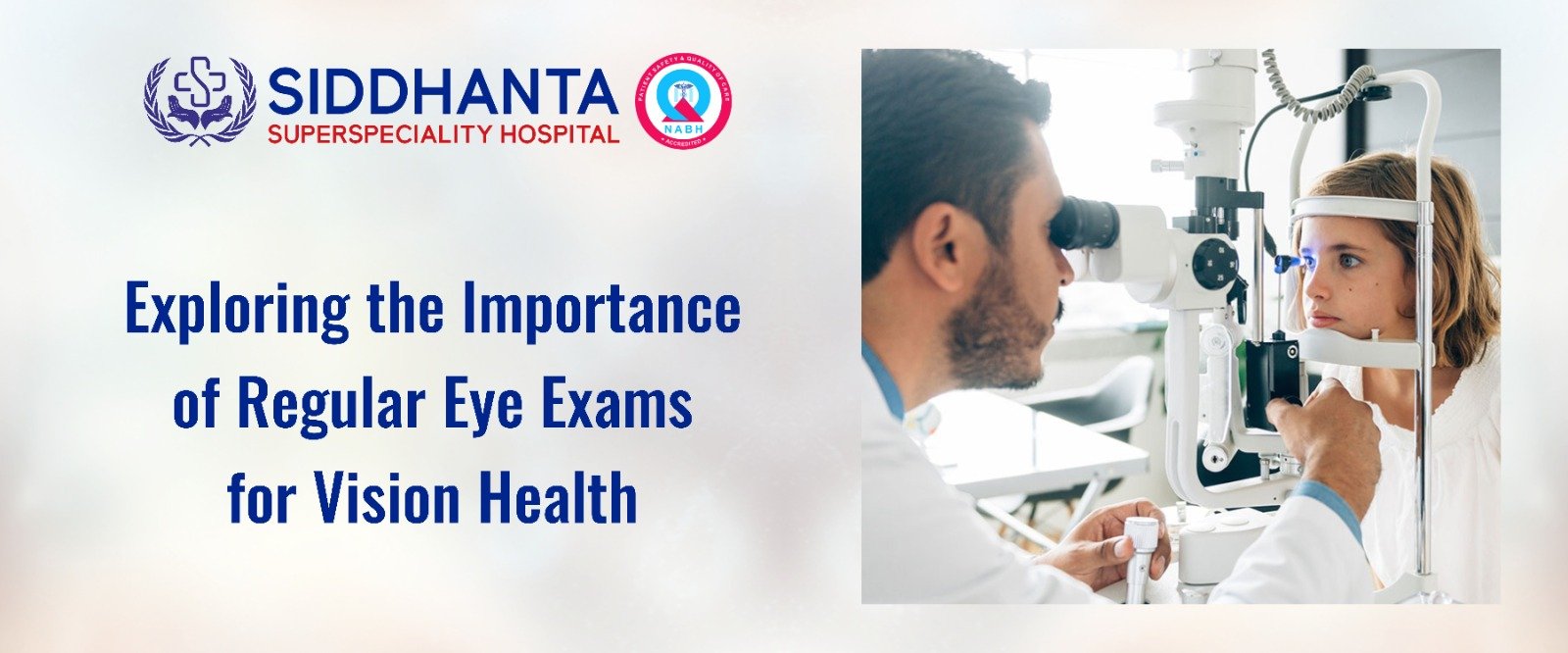Exploring the Importance of Regular Eye Exams for Healthy Eyesight
Posted on August 23rd, 2025 EyesRegular eye exams are crucial for maintaining optimal vision health and detecting potential eye conditions early. These comprehensive evaluations, conducted by ophthalmologists or optometrists, encompass various tests to assess visual acuity, eye muscle function, peripheral vision, and eye health. One of the primary reasons for scheduling regular eye exams is to detect refractive errors such as nearsightedness, farsightedness, and astigmatism. Corrective measures such as glasses, contact lenses, or refractive surgery can significantly improve visual acuity and quality of life for individuals with these conditions. Moreover, eye exams can uncover underlying eye diseases and conditions that may not present symptoms in their early stages. Conditions such as glaucoma, macular degeneration, diabetic retinopathy, and cataracts can lead to vision loss if left untreated. However, early detection through routine eye exams allows for timely intervention and management, potentially preserving vision and preventing irreversible damage. Additionally, eye exams play a vital role in assessing overall health, as certain systemic conditions like diabetes and hypertension can manifest symptoms in the eyes. Changes in the blood vessels or the appearance of specific lesions in the retina may indicate underlying health issues, prompting further medical evaluation and intervention. In conclusion, regular eye exams are essential for maintaining optimal vision health and overall well-being. By detecting refractive errors, eye diseases, and systemic conditions early, these evaluations empower individuals to take proactive steps to preserve their vision and prevent vision loss. Therefore, scheduling routine eye exams should be a priority for everyone, regardless of age or perceived eye health. Keywords: best hospital in Bhopal, top hospital in Bhopal, Siddhanta Superspeciality Hospital, Siddhanta Hospital
Share this postRelated Posts
Understanding Common Eye Conditions and Their Management
Eye conditions encompass a broad spectrum of disorders that affect visual function and eye health. From refractive errors to more complex diseases, understanding these conditions and their management is crucial for preserving vision and enhancing quality of life. Refractive errors, including myopia (nearsightedness), hyperopia (farsightedness), and astigmatism, are among the most common eye conditions worldwide. These conditions result from abnormalities in the shape of the eye, leading to blurred vision at various distances. Corrective measures such as glasses, contact lenses, or refractive surgery offer effective solutions for improving visual acuity. Cataracts, characterized by the clouding of the eye's natural lens, are another prevalent eye condition, particularly among older adults. Cataract surgery, a safe and routine procedure, involves removing the cloudy lens and replacing it with an artificial intraocular lens (IOL), restoring clear vision and improving quality of life for affected individuals. Glaucoma poses a significant threat to vision health, often referred to as the "silent thief of sight" due to its asymptomatic nature in the early stages. This progressive eye disease damages the optic nerve, leading to irreversible vision loss if left untreated. Management typically involves lowering intraocular pressure through medication, laser therapy, or surgery to slow disease progression and preserve remaining vision. Macular degeneration, a leading cause of vision loss in older adults, affects the central portion of the retina (macula), impairing central vision necessary for activities like reading and driving. While there is no cure for macular degeneration, treatments such as anti-vascular endothelial growth factor (anti-VEGF) injections and photodynamic therapy can help slow disease progression and preserve remaining vision. In summary, understanding common eye conditions and their management strategies is essential for promoting optimal vision health and quality of life. Whether it's refractive errors, cataracts, glaucoma, or macular degeneration, early detection and appropriate interventions are key to preserving vision and minimizing visual impairment.
Last updated August 23rd, 2025
The Impact of Digital Devices on Eye Health: Tips for Preventing Digital Eye Strain
In today's digital age, many of us spend a significant amount of time using computers, smartphones, tablets, and other electronic devices. While these devices offer convenience and connectivity, prolonged screen time can take a toll on our eyes, leading to symptoms of digital eye strain. Digital eye strain, also known as computer vision syndrome, encompasses a range of symptoms including eye fatigue, dryness, redness, blurred vision, and headaches. These symptoms arise from prolonged focusing on digital screens, increased blue light exposure, and reduced blinking rates, leading to eye discomfort and visual disturbances. To mitigate the impact of digital devices on eye health, incorporating simple strategies into our daily routine can make a significant difference: 1. Follow the 20-20-20 rule: Take a 20-second break every 20 minutes and look at something 20 feet away to reduce eye strain and fatigue. 2. Adjust screen settings: Optimize screen brightness, contrast, and font size to minimize glare and improve readability. 3. Blink regularly: Remind yourself to blink frequently to prevent dry eyes and maintain adequate moisture on the ocular surface. 4. Use artificial tears: Lubricating eye drops can help alleviate dryness and discomfort associated with prolonged screen time. 5. Practice proper ergonomics: Position your computer screen at eye level and maintain a comfortable viewing distance to reduce neck and shoulder strain. Furthermore, investing in blue light-blocking glasses or screen filters can help reduce exposure to harmful blue light emitted by digital screens, potentially alleviating symptoms of digital eye strain. In conclusion, while digital devices have become integral to our daily lives, it's essential to prioritize eye health and take proactive steps to prevent digital eye strain. By incorporating simple habits and ergonomic adjustments into our routine, we can minimize eye discomfort and preserve long-term vision health in the digital age
Last updated August 23rd, 2025
Comments
No Comments..
For your health, Schedule an appointment Today
© Siddhanta Hospital is Designed by SSDIGIMARK

